8 Best Safari Destinations in Rajasthan, India’s “Land of Kings,” offers a spectacular array of safari destinations, each with its unique charm and wildlife diversity. The Ranthambore National Park, nestled in the Aravalli hills, is a crown jewel. Renowned for its thriving population of Bengal tigers, it also houses leopards, sloth bears, and a rich avian variety.
The Keoladeo National Park in Bharatpur is a UNESCO World Heritage site, known for its extraordinary birdlife. Migratory birds from around the globe flock here, making it a paradise for birdwatchers.
The Sariska Tiger Reserve, once a hunting ground for the royals, has successfully reintroduced tigers and is now a vital conservation area. Leopards, hyenas, and various species of deer roam its dry deciduous forests Wildlife in Rajasthan.
For a desert safari, the Jaisalmer region provides a unique experience. The Sam Sand Dunes offer an enchanting landscape, and camel safaris allow visitors to explore the vast Thar Desert, witnessing traditional Rajasthani culture along the way.
Lastly, the Desert National Park near Jaisalmer is a haven for wildlife enthusiasts. This arid expanse shelters rare species like the Great Indian Bustard and the desert fox.
In Rajasthan, safari experiences promise encounters with both majestic predators and vibrant avifauna, set against a backdrop of stunning landscapes and rich cultural heritage. Each destination offers a distinctive adventure, ensuring a memorable journey for every traveler Rajasthan Budget Tours.
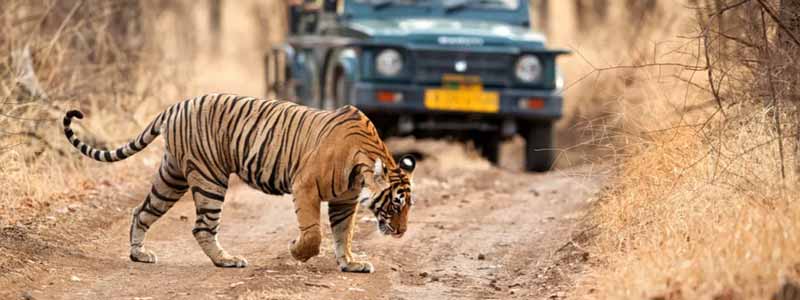
Ranthambore National Park:
Ranthambore National Park, situated in the Sawai Madhopur district of Rajasthan, India, is a jewel in the crown of India’s wildlife reserves. Covering an area of approximately 1,334 square kilometers, it was once the private hunting ground of the Maharajas of Jaipur. Today, it stands as one of the most renowned and successful tiger conservation projects in the country Rajasthan wildlife Tour Packages.
The park’s diverse ecosystem comprises dry deciduous forests, grasslands, lakes, and rocky outcrops, creating a rich habitat for a wide array of wildlife. However, the park is most celebrated for its Bengal tiger population. Ranthambore is one of the few places in the world where one can witness these magnificent creatures in their natural habitat.
Apart from tigers, the park is also home to leopards, sloth bears, Indian wild boars, spotted deer, sambar deer, and a variety of bird species. The picturesque landscapes, with ancient ruins and historic forts scattered throughout, add a unique charm to the wildlife experience.
The centerpiece of Ranthambore is the imposing Ranthambore Fort, dating back to the 10th century. This UNESCO World Heritage Site offers a captivating blend of history and natural beauty. The park’s numerous lakes, including Padam Talao and Raj Bagh Talao, serve as vital watering holes for the resident wildlife, making them prime spots for wildlife observation.
Visitors can explore the park through thrilling safaris, both on jeep and canter vehicles, led by experienced naturalists and guides. These excursions offer an opportunity to witness the mesmerizing interplay of predator and prey in this enchanting wilderness.
Ranthambore National Park stands as a testament to successful wildlife conservation and provides an awe-inspiring experience for nature enthusiasts and wildlife lovers alike. It remains a crucial stronghold for the preservation of India’s rich biodiversity.
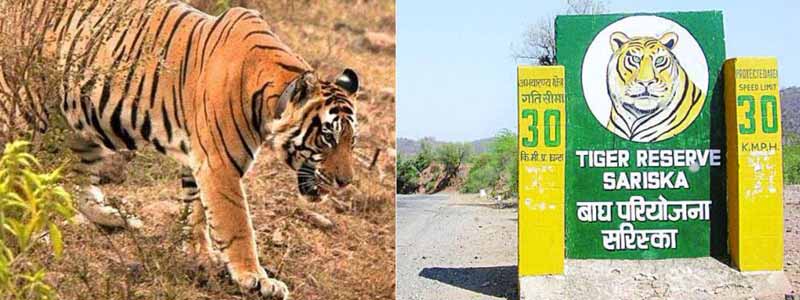
Sariska Tiger Reserve:
The Sariska Tiger Reserve, located in the Alwar district of Rajasthan, India, spans over 866 square kilometers of rugged terrain. Established in 1955, it was initially a hunting ground for the royal families of Alwar. However, in 1978, it was designated as a wildlife sanctuary and later upgraded to a national park and tiger reserve in 1982.
The reserve is characterized by its diverse landscape, which includes dry deciduous forests, rocky hills, grasslands, and narrow valleys. It is interspersed with streams and water bodies, providing crucial watering holes for the resident wildlife.
The primary draw of Sariska is its successful tiger conservation efforts. After a period of decline, the reserve has made significant strides in tiger reintroduction. Alongside tigers, Sariska is home to other carnivores such as leopards, wild dogs, hyenas, and jackals. The herbivore population is equally impressive, featuring sambar deer, spotted deer, nilgai, and wild boar.
Sariska also boasts a rich avian population, with over 200 species of birds, including the crested serpent eagle, golden-backed woodpecker, and the Indian peafowl. The presence of water bodies further enhances the birding experience.
Apart from the charismatic megafauna, Sariska is also a sanctuary for various reptiles, including the Indian python, monitor lizard, and several species of snakes.
Visitors can explore Sariska through jeep safaris and guided nature walks, allowing for a close encounter with the diverse flora and fauna. Interpretative centers and educational programs enhance the overall experience, offering insights into the delicate ecosystems within the reserve.
Sariska Tiger Reserve stands as a testament to successful conservation efforts, providing a vital sanctuary for India’s endangered wildlife and offering visitors a unique opportunity to witness these magnificent creatures in their natural habitat.
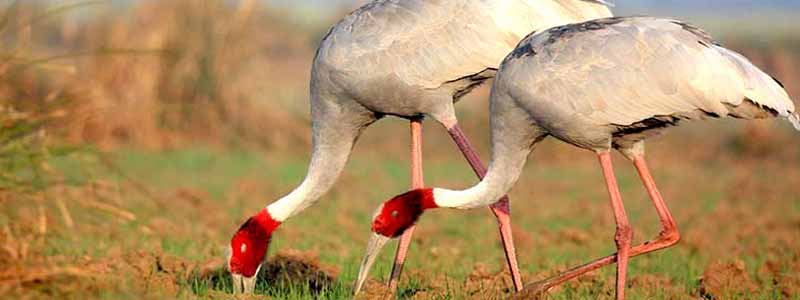
Keoladeo National Park (Bharatpur):
Keoladeo National Park, located in Bharatpur, Rajasthan, is a UNESCO World Heritage site and a haven for avian enthusiasts. Spanning over 29 square kilometers, this wetland ecosystem is a remarkable sanctuary for migratory birds, earning it the moniker “Bird Paradise of India.”
The park was originally a natural depression in the region, which was artificially transformed into a reservoir in the 18th century by the Maharaja of Bharatpur. Later, it was further developed and maintained by the British rulers. Today, Keoladeo stands as a testimony to successful conservation efforts.
The park’s landscape is a mosaic of shallow lakes, reed beds, grasslands, and woodlands, providing an ideal habitat for a staggering variety of avifauna. Every winter, millions of birds from Siberia, Central Asia, and even Europe make their way to this sanctuary, seeking refuge from harsh climates.
Some of the notable species that grace Keoladeo include the Siberian crane, common crane, painted stork, pelicans, and various species of ducks, geese, and waders. Birdwatchers also have the opportunity to spot raptors like the imperial eagle and osprey.
Apart from avian wonders, Keoladeo is also home to a diverse range of wildlife, including sambar deer, spotted deer, nilgai, wild boar, and pythons.
Visitors can explore the park through well-maintained walking trails, cycle rickshaws, or bicycles. The best time to visit is between October and February when the migratory birds arrive, and the weather is pleasant.
Keoladeo National Park, with its rich biodiversity, serene ambiance, and captivating avian displays, stands as a testament to the significance of conservation efforts in preserving our natural heritage.
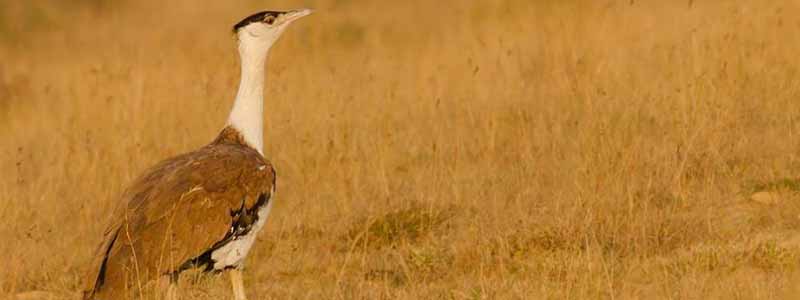
Desert National Park (Jaisalmer):
The Desert National Park, located near the ancient city of Jaisalmer in Rajasthan, India, is a unique and captivating natural reserve. Spanning over 3,000 square kilometers, it stands as one of the largest national parks in the country. Established in 1992, the park was designated to protect the fragile desert ecosystem and its diverse wildlife.
This arid expanse is a testament to nature’s resilience. Its landscape comprises rolling sand dunes, intermingled with thorny shrubs and sparse vegetation, creating a surreal and mesmerizing terrain. One of the park’s key attractions is its avian population, with a diverse array of bird species that have adapted to this harsh environment. The critically endangered Great Indian Bustard, known for its majestic appearance, finds refuge here, alongside other species like the desert courser, spotted eagle, and more.
The wildlife of the Desert National Park isn’t limited to birds alone. Visitors might be lucky enough to spot desert foxes, chinkaras (Indian gazelles), blackbucks, and even elusive predators like the desert cat and Indian wolf. Reptiles such as the spiny-tailed lizard and the saw-scaled viper also call this park home.
For those seeking adventure, camel safaris are a popular way to explore this unique landscape. The undulating sand dunes provide a dramatic backdrop for these excursions, offering an immersive experience in the heart of the Thar Desert.
In addition to its natural wonders, the Desert National Park holds archaeological significance, with ancient fossils and stone tools providing insights into the region’s history.
Overall, the Desert National Park in Jaisalmer is a testament to the beauty and resilience of arid ecosystems, offering a one-of-a-kind experience for nature enthusiasts, wildlife lovers, and adventurers alike.
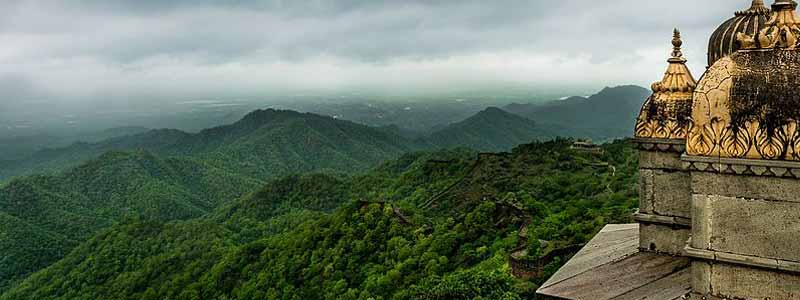
Kumbhalgarh Wildlife Sanctuary:
Kumbhalgarh Wildlife Sanctuary, situated in the rugged Aravalli Hills of Rajasthan, India, is a haven for biodiversity and natural beauty. Spanning over 600 square kilometers, it surrounds the historic Kumbhalgarh Fort and is part of the larger Kumbhalgarh Protected Area.
This sanctuary is celebrated for its diverse flora and fauna. The terrain encompasses lush forests, steep slopes, and verdant valleys, providing a variety of habitats for numerous species. The sanctuary is characterized by dry deciduous forests, making it home to an array of wildlife.
One of the primary attractions of Kumbhalgarh Wildlife Sanctuary is its thriving population of Indian leopards. These elusive big cats roam the terrain, along with other carnivores like jackals, hyenas, and foxes. Additionally, the sanctuary houses various herbivores, including sambar deer, chital, and wild boar. Birdwatchers will be delighted by the rich avian life, with over 200 species recorded, including the endangered Indian vulture.
One of the standout features of Kumbhalgarh Wildlife Sanctuary is its picturesque landscape. The scenic beauty is enhanced by the seasonal water bodies and the scenic Banas River, which flows through the sanctuary, creating an oasis for wildlife.
Visitors can explore the sanctuary through various trekking trails and jeep safaris. The routes wind through the forested terrain, providing opportunities to spot wildlife in their natural habitat. The sanctuary also offers a chance to witness the historical marvel of Kumbhalgarh Fort, which stands as an emblem of Rajasthan’s architectural grandeur.
In essence, Kumbhalgarh Wildlife Sanctuary is a treasure trove of natural wonders, combining rich biodiversity with historical splendor. It offers a unique opportunity for nature enthusiasts and history buffs to immerse themselves in the charm of Rajasthan’s wild and cultural heritage.
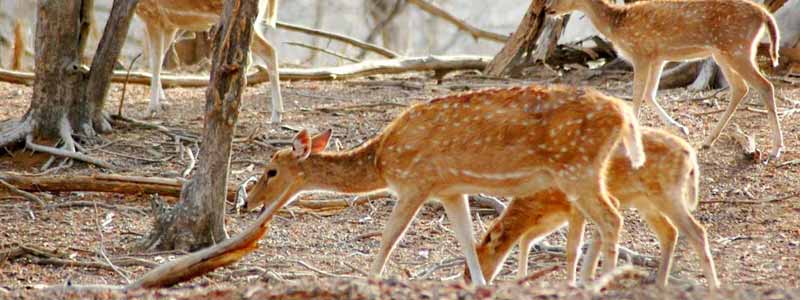
Mount Abu Wildlife Sanctuary:
The Mount Abu Wildlife Sanctuary is a captivating oasis of biodiversity nestled in the Aravalli Range of Rajasthan, India. Spread over an area of approximately 290 square kilometers, it is the state’s only hill station and a refreshing contrast to the arid landscapes that Rajasthan is often associated with.
This sanctuary is a haven for nature enthusiasts, offering a diverse range of flora and fauna. Lush green forests, rocky hills, and serene lakes create a picturesque backdrop. The sanctuary is primarily characterized by sub-tropical evergreen forests, providing a home to a wide array of plant species, including orchids, bamboo, and various medicinal herbs.
One of the most notable features of the sanctuary is its animal kingdom. It shelters an impressive variety of wildlife, including langurs, wild boars, sambar deer, leopards, and Indian civets. Birdwatchers will delight in the sanctuary’s avian population, which includes migratory species like the grey junglefowl and the Indian peafowl, as well as resident birds such as the white-eye, grey hornbill, and various eagles.
A network of well-marked trails allows visitors to explore the sanctuary on foot, providing an immersive experience amidst nature’s wonders. Additionally, there are opportunities for eco-tourism activities like camping and birdwatching, providing a chance to connect with the natural world on a deeper level.
The Mount Abu Wildlife Sanctuary stands as a testament to Rajasthan’s diverse ecology, offering a unique escape for those seeking solace in the lap of nature. It’s a must-visit destination for anyone looking to experience the vibrant biodiversity that Rajasthan has to offer 8 Best Safari Destinations in Rajasthan.
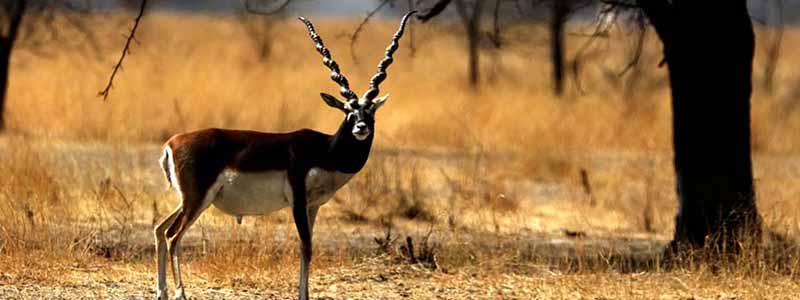
Tal Chhapar Wildlife Sanctuary (Churu):
The Tal Chhapar Wildlife Sanctuary, located in the Churu district of Rajasthan, India, is a hidden gem for wildlife enthusiasts. Spread over an area of approximately 7.19 square kilometers, this sanctuary is a unique ecosystem nestled amidst the arid landscapes of the Thar Desert.
What sets Tal Chhapar apart is its flat and saline depression, known as a ‘tal’. This region experiences extreme temperatures, ranging from scorching summers to chilly winters, making it a challenging habitat for wildlife. Despite these harsh conditions, the sanctuary hosts a surprising diversity of flora and fauna.
The sanctuary is renowned for its avian inhabitants. It is a critical breeding ground for the endangered bird species, the Great Indian Bustard. This charismatic bird, known for its striking appearance and distinctive mating displays, finds a safe haven here. In addition to the bustard, Tal Chhapar is home to a variety of raptors, including harriers, eagles, and vultures 8 Best Safari Destinations in Rajasthan.
The landscape primarily consists of grasslands, thorn scrub, and small water bodies that serve as lifelines for the resident and migratory bird species. The sanctuary is also inhabited by other wildlife like desert foxes, desert cats, and numerous reptiles and rodents adapted to the arid environment.
Visitors to Tal Chhapar can engage in birdwatching and wildlife photography, immersing themselves in the raw beauty of this unique ecosystem. The best time to visit is during the winter months, from October to March, when migratory birds join the resident population.
Preserving the delicate balance of this fragile ecosystem is of utmost importance, and the efforts of conservationists and local communities are crucial in ensuring the continued survival of the wildlife at Tal Chhapar Wildlife Sanctuary.
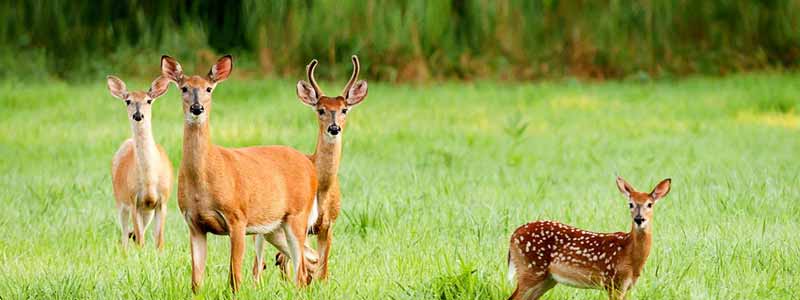
Kailadevi Wildlife Sanctuary (Karauli):
Located in the Karauli district of Rajasthan, the Kailadevi Wildlife Sanctuary is a hidden gem in the state’s rich wildlife tapestry. Covering an area of approximately 676 square kilometers, this sanctuary is named after the revered Kaila Devi Temple that lies within its boundaries.
The sanctuary’s topography is diverse, featuring rugged hills, lush valleys, and dense forests. Its vegetation primarily comprises dry deciduous forests, providing a habitat for a wide range of flora and fauna. The sanctuary is known for its unique mix of wildlife, including species like leopards, hyenas, jungle cats, and various types of deer. It is also a haven for bird enthusiasts, with over 200 avian species recorded, including vultures, eagles, and migratory birds.
One of the most significant attractions of the Kailadevi Wildlife Sanctuary is its population of Indian wolves, a rare and elusive species. Their presence adds to the ecological importance of the sanctuary, making it a crucial conservation area.
Apart from its biodiversity, the sanctuary holds cultural and religious significance for locals and pilgrims visiting the Kaila Devi Temple. Devotees believe that the goddess inhabits the area, creating a unique blend of spirituality and wildlife conservation.
The best time to visit the sanctuary is during the winter months (October to March) when the weather is pleasant and wildlife sightings are more common. Guided safaris are available for tourists to explore the sanctuary and witness its natural wonders.
Kailadevi Wildlife Sanctuary, with its blend of wildlife diversity and cultural heritage, offers a truly enriching experience for nature lovers, wildlife enthusiasts, and those seeking a spiritual connection with nature 8 Best Safari Destinations in Rajasthan.








